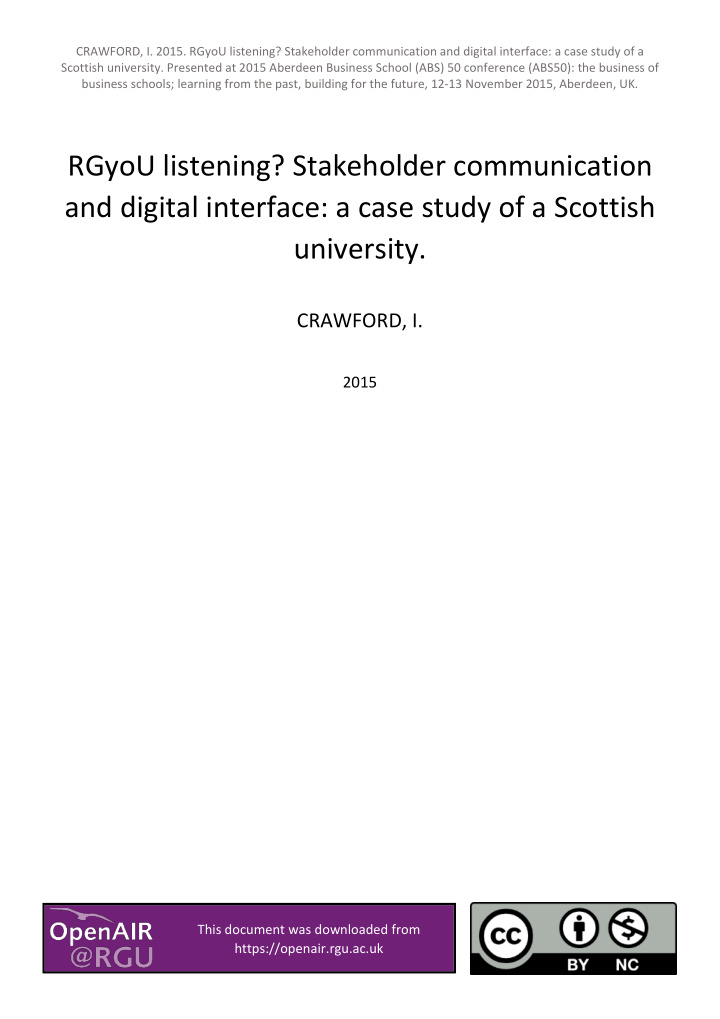



CRAWFORD, I. 2015. RGyoU listening? Stakeholder communication and digital interface: a case study of a Scottish university. Presented at 2015 Aberdeen Business School (ABS) 50 conference (ABS50): the business of business schools; learning from the past, building for the future, 12-13 November 2015, Aberdeen, UK. RGyoU listening? Stakeholder communication and digital interface: a case study of a Scottish university. CRAWFORD, I. 2015 This document was downloaded from https://openair.rgu.ac.uk
RGyoU Listening? Stakeholder Communication and the Digital Interface: A Case Study of a Scottish University Izzy Crawford Senior Lecturer, Robert Gordon University
Presentation Structure • Research Overview • Social Media Presence • Traditional and New Media • Tailored Platforms • Transparency and Porosity • Blurred Boundaries • Adopters and Non Adopters • Conversational Medium
Research Overview • Robert Gordon University Aberdeen, Scotland • Communication Review Steering Group • In-depth interviews and focus groups (Spring 2013) • What role does the internal/external communication interface in the conversational era play in influencing stakeholder perceptions of RGU?
Social Media Presence • Website and email more visible than social media • Social media associated with student recruitment • Principal’s blog used to reinforce understanding • Untapped potential for more varied and engaging content
Traditional and New Media • Potential for stories to cross over both ways • Old and new media most valuable in combination • Labour intensive and time consuming • Support and training necessary
Tailored Platforms • Must adapt to each stakeholder and situation • Professional networks preferred by professionals • Social networks preferred by existing and prospective students • Students create social platforms to complement formal channels
Transparency and Porosity • Frequency and richness of communication influences perceptions • High awareness of risk to corporate reputation through lack of control • Inconsistent messaging through lack of integration and alignment • Increased emphasis on transparency within public sector
Blurred Boundaries • User determined content and consumption • Personal/professional boundaries and power relationships disrupted • Multi-way communication influences tone, content and feedback • Opportunity for more holistic and meaningful engagement
Adopters and Non Adopters • Extent of social media adoption influences efficacy • Clear divide between adopters and non-adopters • Implications for leadership communication • Consensus that social media is essential to communication strategy
Conversational Medium • Stakeholder voices require an open forum • Tendency to over control and/or under respond • Opportunity to build trust and mutual understanding • More emphasis on dialogue and non-corporate, inspiring content
THANK YOU QUESTIONS?
Recommend
More recommend